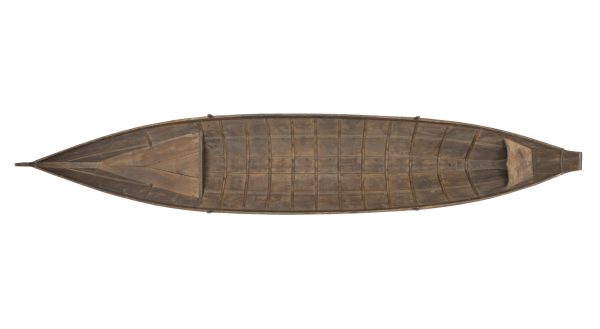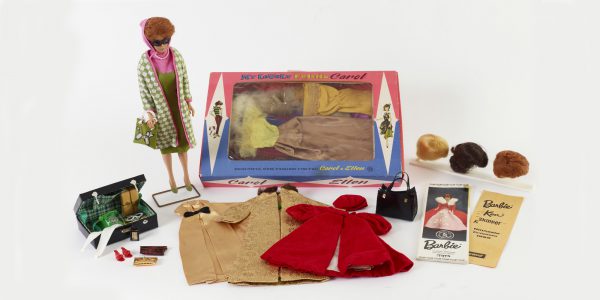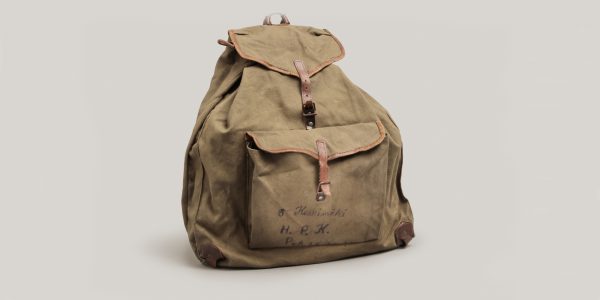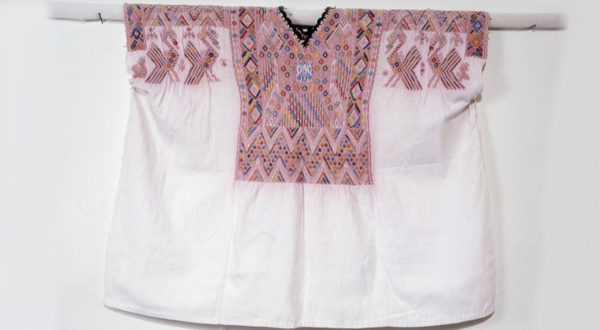Boomerang
Object of the Month - December 2018
In recent years, indigenous peoples have become increasingly interested in their own cultural heritage stored in museums. In June 2018, a group of Aboriginal Australians visited the National Museum of Finland to see the Arrernte artefacts included in the ethnographic collection. The artefacts were purchased from das Museum für Völkerkunde zu Leipzig in Germany in 1913.
Because Germany had extensive colonies, German museums have a great deal of ethnographic artefacts. This enabled them to sell the surplus, in order to obtain funds for new expeditions and acquisitions. Collection VK4918:1−232 was collected by a Lutheran missionary, Oskar Liebler, while carrying out missionary work in Australia in 1910–1913. It features over 100 artefacts from the Aboriginal Australian Arrernte people. The Arrernte, also referred to as the Aranda or Arunta, were originally hunter-gatherers who lived in and moved between semi-permanent camps within a specific area. They have been divided into Eastern, Western and Southern Arrernte, based on, for example, languages/dialects. Liebler’s collection is mainly from the Western Arrernte.
Our Arrernte collection features many ritual objects or otherwise sensitive materials, not intended to be even seen by those outside the community, especially women. For this season, the item chosen as artefact of the month is something for which Australia is known everywhere: “It boomeranged.”
However, boomerangs were not common in all parts of Australia. They were never used in Tasmania and the Cape York Peninsula, for example. The boomerang is a curved, wooden throwing weapon that spins in the air and hits the prey, killing or stunning it so that the hunter can catch it and finish it off. Proper boomerangs used for hunting are heavy and do not return to the thrower. One type of boomerang has a hook on one end and, due to its shape, it is known as a swan-neck, beak or number 7 boomerang. It is not a weapon for hunting, but rather for fighting and was also used as a striking weapon in close combat. In such cases, it was held like a pickaxe, with the hook serving as the blade. In combat, the enemy would use their own boomerang, battle club or shield to stop any boomerang thrown at them. When they did that, the hook of the boomerang would catch on the shaft of the club or the edge of the shield or boomerang, causing the boomerang’s handle to spin and hit the enemy on the head.
A returning boomerang must have a specific curve and longitudinal twist in order to have the necessary aerodynamic properties. It is often shorter than the types mentioned above, with a sharp bend at the middle, but it is difficult to tell a boomerang’s type just from its looks. Skilfully thrown, a boomerang spins for quite a long distance high in the air and returns to its starting point in a wide curve unless it hits something. Boomerangs have been used for bird-hunting, also using them to scare birds into flight and then catching them with spears. Returning boomerangs were originally only used on the western coast of Australia and a few other areas, such as Kimberley in North-Western Australia, for playful demonstration of skill. However, as early as the 1950s, Aboriginal groups in other areas also started making returning boomerangs for tourists who wanted them as souvenirs.
Heli Lahdentausta
Sources:
Abbie A.A. 1969. The Original Australians. Frederick Muller Ltd., London.
Davidson D.S. Australian Throwing-sticks, Throwing-clubs, and Boomerangs. American Anthropologist 3/1936. Vol 38 (1), p. 76–100.
Spencer Baldwin and Gillen, F.J. 1899. The Native Tribes of Central Australia. Dover Publications, New York.












